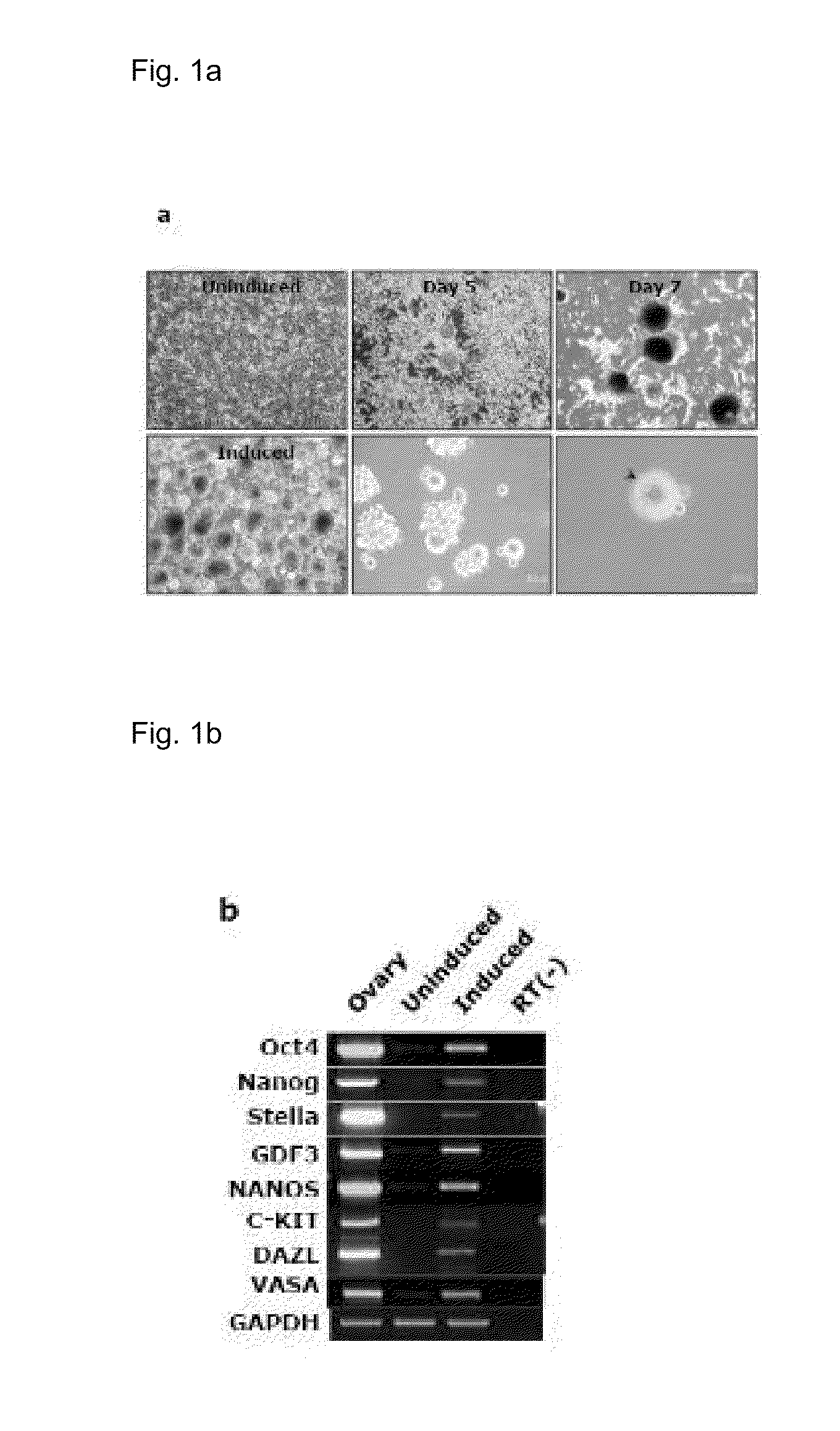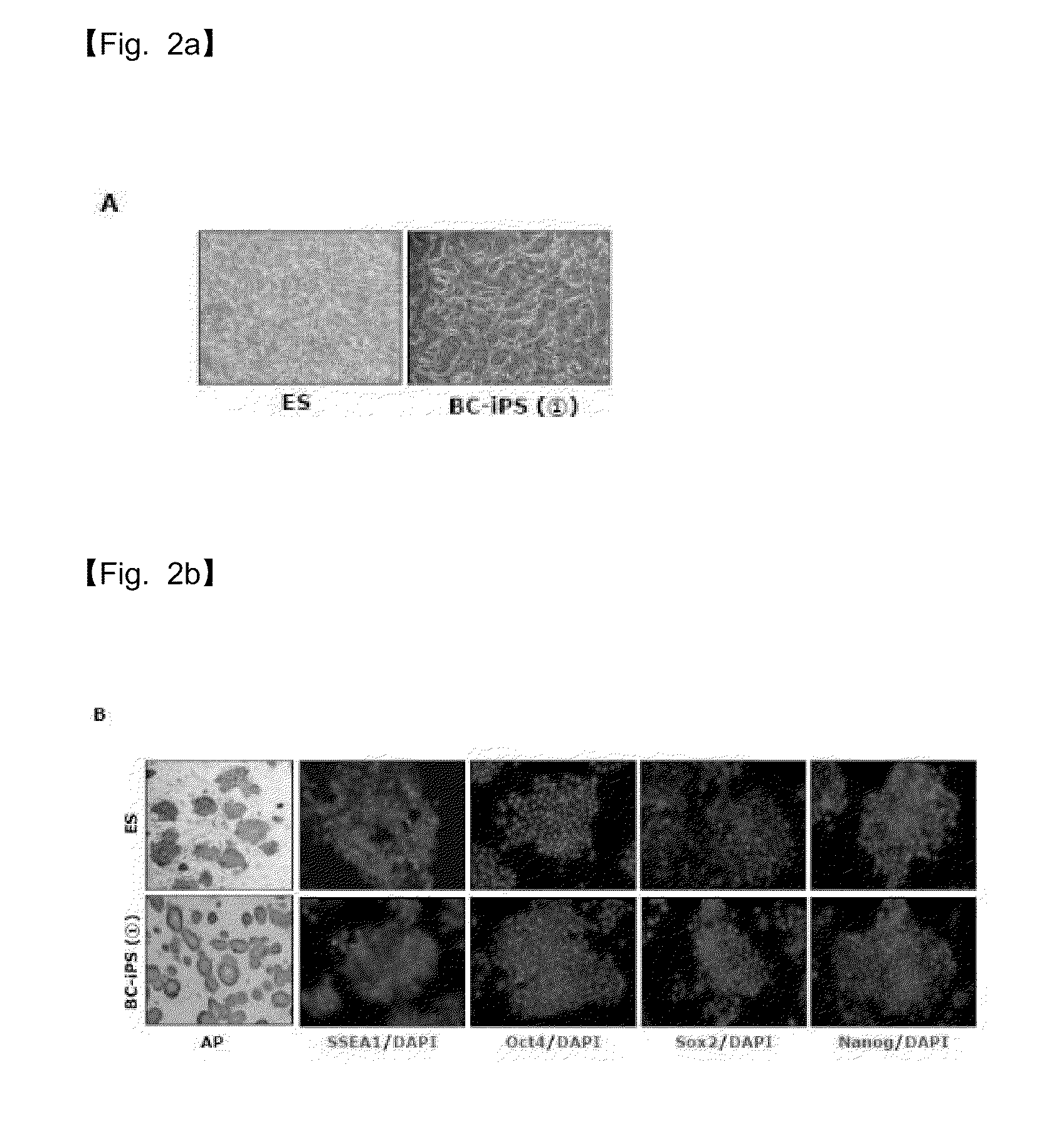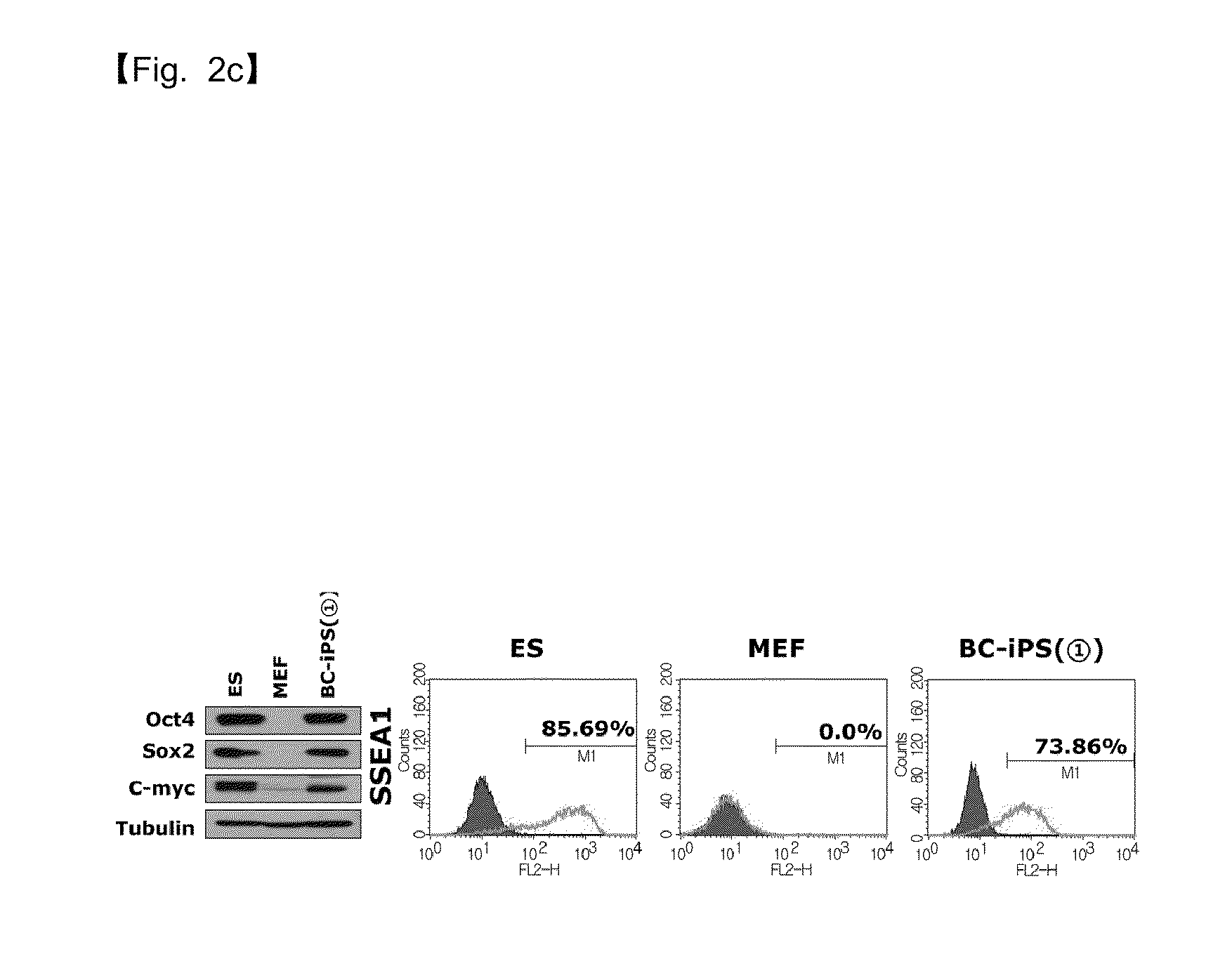COMPOSITION FOR REPROGRAMMING SOMATIC CELLS TO GENERATE INDUCED PLURIPOTENT STEM CELLS, COMPRISING Bmi1 AND LOW MOLECULAR WEIGHT SUBSTANCE, AND METHOD FOR GENERATING INDUCED PLURIPOTENT STEM CELLS USING THE SAME
a technology of induced pluripotent stem cells and somatic cells, which is applied in the field of composition for reprogramming somatic cells to generate and a method for generating embryonic stem celllike cells using the same. it is difficult to isolate a number of cells from patients, and adult stem cells are so far known to remain multipoten
- Summary
- Abstract
- Description
- Claims
- Application Information
AI Technical Summary
Benefits of technology
Problems solved by technology
Method used
Image
Examples
example 1
[0097]Culture of Mouse Somatic Cells and Introduction of Bmi1 Gene thereinto
[0098]Mouse somatic cells, in detail, mouse fibroblasts were employed to generate embryonic stem cell-like cells. Embryos were taken from CF1 strain mice on embryonic day 13.5. Cells were cultured in DMEM (high glucose, w / o sodium pyruvate) supplemented with 10% FBS (Fetal bovine serum), 0.1 mM non-essential amino acid, 1% penicillin / streptomycin and 0.1 mM β-mercaptoethanol in tissue culture flasks, after which fibroblasts at the 3rd passage were seeded at a density of 2×105 cells / well into 6-well plates.
[0099]For use in gene transfer, retrovirus particles were prepared from the PT67 packaging cell line. In this context, a pBabe puro Bmi1 (from Dr. G. P. Dimri, Evanston Northwestern Healthcare Research Institute, Feinberg School of Medicine, Northwestern University, Evanston, Ill. 60201, USA), constructed by inserting a human Bmi1 gene (NCBI accession No. L13689) into a pBabe puro vector, was transfected in...
example 2
Reprogramming of Bmi1-Transduced Somatic Cells into Germ Cell-Like Cells Under Specific Culture Condition
[0101]When cultured in an EGF-free condition for neural stem cells (DMEM / F12+B27+N2+1% penicillin / streptomycin+20 ng / ml bFGF), mouse somatic cells into which a Bmi1 gene was introduced with a retrovirus were reprogrammed to form cells similar to neurospheres which then progressed to form germ cell-like cells (FIG. 1A). These cells were found to express the genes of germ cells as analyzed by RT-PCR (FIG. 1B).
example 3
Selection of Oct4-Positive Cells Using Oct4-Promoter-GFP, Reprogramming into iPS Cells by Treatment with Low Molecular Weight Substances PD0325901 and CHIR99021, and Characterization of Embryonic Stem Cells
[0102]1) Selection of Oct4-Positive Cells Using Oct4-Promoter-GFP
[0103]To compensate for the fact that the dedifferentiated stem cells established in Example 2 were observed to not form chimeras, Oct4-®-GFP (refer to Nature 448, 318-324) was introduced, followed by selecting Oct4-positive cells with GFP.
[0104]The selected cells were able to progress further to cells capable of chimera formation. However, they could not be regarded as fully reprogrammed cells because they differed from embryonic stem cells in gene expression.
[0105]2) Reprogramming into iPS Cells by Treatment with Low Molecular Weight Substances PD0325901 and CHIR99021
[0106]The Oct4-positive cells were treated with 0.5 μM PD0325901 and 3 μM CHIR99021 and induced to undergo reprogramming under the culture conditions ...
PUM
| Property | Measurement | Unit |
|---|---|---|
| Molecular weight | aaaaa | aaaaa |
| Inhibition | aaaaa | aaaaa |
Abstract
Description
Claims
Application Information
 Login to View More
Login to View More - R&D
- Intellectual Property
- Life Sciences
- Materials
- Tech Scout
- Unparalleled Data Quality
- Higher Quality Content
- 60% Fewer Hallucinations
Browse by: Latest US Patents, China's latest patents, Technical Efficacy Thesaurus, Application Domain, Technology Topic, Popular Technical Reports.
© 2025 PatSnap. All rights reserved.Legal|Privacy policy|Modern Slavery Act Transparency Statement|Sitemap|About US| Contact US: help@patsnap.com



